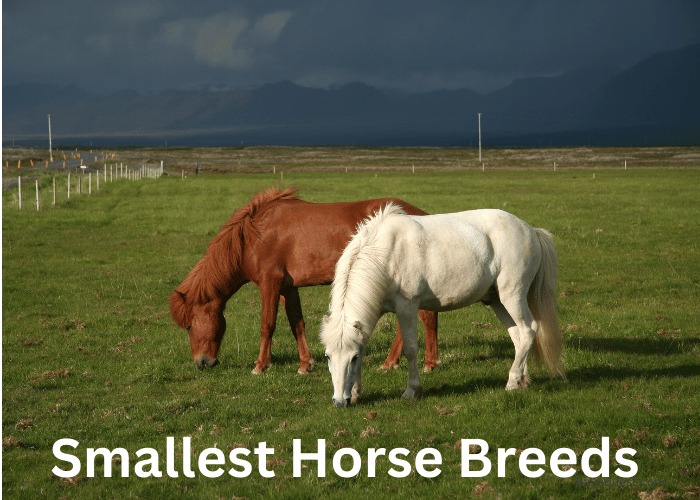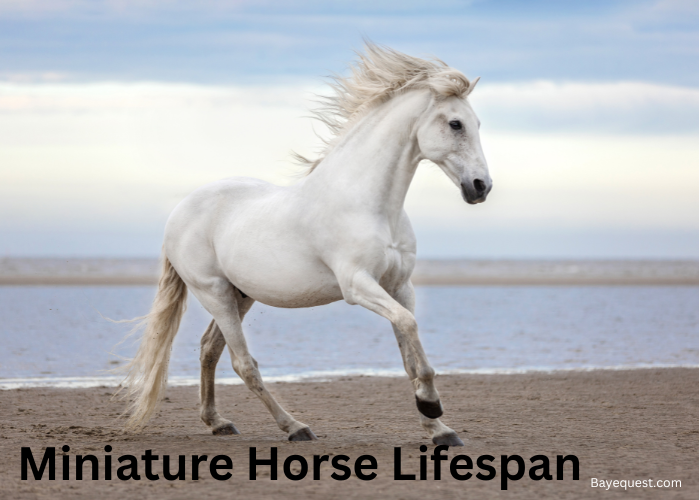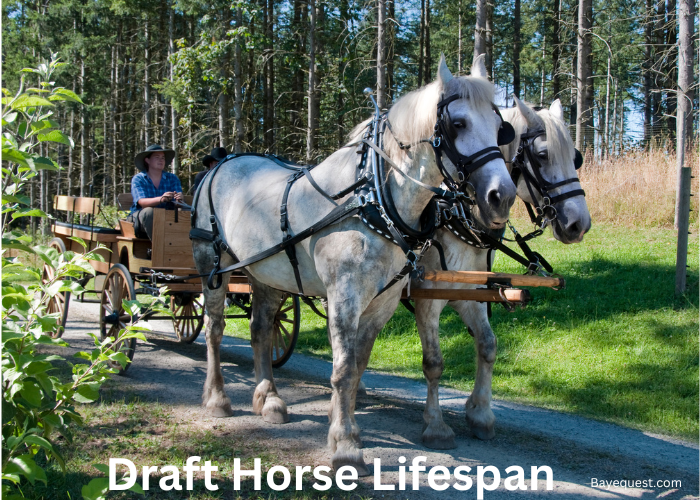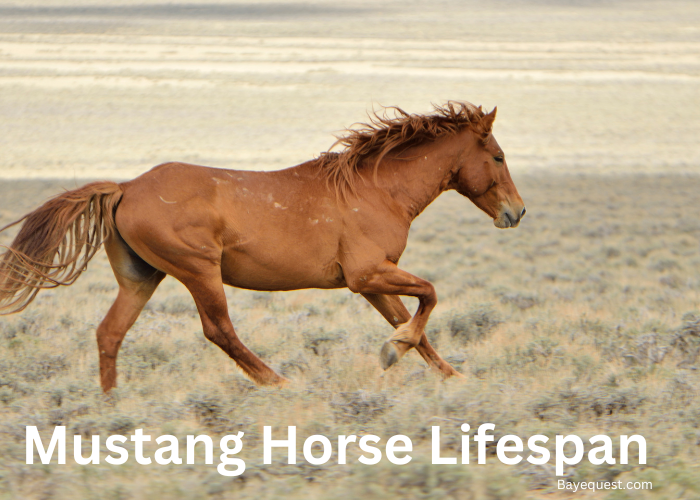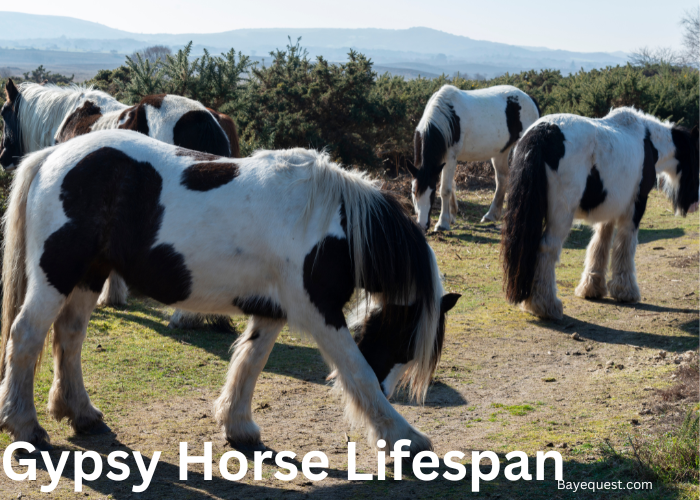Did you know the world’s smallest horse stands just 17 inches tall? As a seasoned equestrian and horse breed expert, I bring you the inside scoop on these miniature marvels.
These pint-sized equines are more than just a cute curiosity. They’re a testament to the incredible diversity of the horse world.
Join us on a journey through the smallest horse breeds in the world. Prepare to be amazed, delighted, and perhaps even a little bit enchanted by these mini marvels.
Breeds of Small Horses: Key Takeaway
- Miniature Horse
- Falabella
- Shetland Pony
- Noma
- Yonaguni
- Caspian Horse
- Welsh Pony
- Icelandic Horse
- Guoxia
- Fjord Horse
- Kentucky Mountain Saddle Horse (Class B)
- Dartmoor Pony
- Haflinger Horse
- Pony of the Americas
- American Quarter Pony
- Choctaw Horse
- Exmoor Pony
- Connemara Pony
- Australian Pony
- Fell Pony
- Highland Pony
- Giara
- Baise
- Bankers
- Virginia Highlander
- Faroe Pony
- Przewalski’s Horse
How is a Small Horse Breed Classified?
Small horse breeds are classified based on a combination of a few factors. Here’s the breakdown:
Height
- Miniature horses are super tiny, usually under 34-38 inches. For instance, American Miniature Horses can’t be taller than 34 inches, as per their association’s rules.
- Ponies. They’re a bit bigger, maxing out at 14.2 hands (58 inches). Each pony breed has its own height limit.
Breed standards
- Breeds have unique rules. These cover looks, behavior, and how they move. It’s how we tell one breed from another.
Special traits
- Looks. Things like body shape, coat, mane, and overall appearance matter. Some breeds have cool patterns or colors only they have.
- Personality and purpose. Each breed is known for something special. Some are great buddies, others help in therapy, or shine in shows. A few have jobs in history, like carrying stuff or helping out on farms.
Organizations
- Breed groups and horse clubs are super important. They keep the breed rules, handle registrations, and support breeding and care practices.
Genetics
- Where a horse comes from genetically matters too. Purebreds have strict family lines. Others are more flexible.
Smallest Horse Breeds and Ponies in the World
1. Miniature Horse
Miniature Horses charm people everywhere. They stand tall, or rather short, at about 34 inches or less.
Originating from Europe in the 1600s, they were once pets for nobility. Today, they’re loved worldwide. Despite their size, they’re not classified as ponies.
Miniatures are known for living long—up to 35 years. They’re hearty, requiring less space but the same care as larger horses. Their friendly nature makes them perfect for therapy and companionship.
2. Falabella
The Falabella is a tiny wonder from Argentina. Rare and refined, this breed never grows taller than 32 inches.
They started from a mix of small horses and ponies in the 19th century. The Falabellas are more than just small; they’re miniature horses with a horse-like build and pony characteristics.
They can live up to 40 years, showing just how resilient they are. Loved for their gentle temperament, Falabellas excel as therapy animals and pets.
3. Shetland Pony
Shetland Ponies come from the Shetland Isles, north of Scotland. Surviving harsh conditions made them strong. They’re small, up to 42 inches tall, but mighty.
Known since the 1700s, they worked in coal mines once. Today, they’re adored by children and adults alike. Shetlands live about 30 years.
They’re smart, sometimes stubborn, but always dependable. Their thick coats keep them warm in any weather, making them as tough as they are cute.
4. Noma
The Noma horse is a hidden gem from Japan, specifically the Noma region. They are critically endangered, with only a few left. Standing at about 40 inches, Nomahorses are among the smallest breeds.
They originated in the 17th century, serving as workhorses. Despite their size, they’re strong and adaptable.
With a lifespan of around 30 years, they’re known for their friendly and calm demeanor. Efforts are ongoing to preserve this unique breed.
5. Yonaguni
Yonaguni horses call the Yonaguni Island, Japan, their home. They’re unique, standing just about 12 hands high.
Known for centuries, these horses adapted to the island’s environment. They’re small but robust, with a wild spirit. Yonagunis live to be around 20 years old.
They’re mostly wild, with a small number tamed for riding. Their resilience and independence make them fascinating, embodying the spirit of their island home.
6. Caspian Horse
The Caspian Horse is ancient, tracing back over 3,000 years in Iran. Tiny but mighty, they stand at about 10 to 12 hands high and weigh around 600 to 700 pounds.
Rediscovered in the 1960s, they were once thought extinct. Caspians are known for their endurance and grace, ideal for children and light adults.
Despite their size, they exhibit horse-like qualities rather than pony traits, including a refined build and spirited temperament. They live up to 30 years, showcasing resilience and adaptability.
7. Welsh Pony
Welsh Ponies, hailing from Wales, are beloved worldwide. They stand about 12.2 hands high and weigh 500 to 600 pounds.
With records dating back to the 1600s, they’re known for their strength, intelligence, and versatility. There are four types, with the Welsh Mountain Pony (Section A) being the smallest.
These ponies live about 25 to 30 years. They excel in various disciplines, from jumping to driving, making them perfect family ponies.
8. Icelandic Horse
Originating from Iceland, these horses are Viking descendants, brought to the island in the 9th century. They stand 13 to 14 hands high and weigh about 730 to 840 pounds.
Known for their unique gaits, including the tölt and flying pace, Icelandic Horses are tough, long-lived (up to 40 years), and versatile. Their double coat makes them resistant to cold. Friendly and curious, they form strong bonds with humans.
9. Guoxia
Guoxia, meaning “under the fruit tree horse,” hails from China. Standing at about 10 hands high and weighing roughly 440 to 500 pounds, these horses were historically used for orchard work.
They’re among the smallest and rarest breed of horse. Known for their gentle nature and strength, Guoxias are suited for children and light driving. Efforts are underway to preserve their lineage.
10. Fjord Horse
From Norway, the Fjord Horse is an ancient breed, recognizable by its distinct dun color and mane style. They stand about 13 to 14.2 hands high and weigh 900 to 1,200 pounds.
Fjords are versatile and used for riding, driving, and therapy. They are gentle and live up to 30 years. Their robust build and striking appearance make them favorites worldwide.
11. Kentucky Mountain Saddle Horse (Class B)
Class B Kentucky Mountain Saddle Horses are known for their smooth gaits and friendly nature. They stand 11 to 14 hands high and weigh around 950 to 1,000 pounds.
Originating from the Appalachian region of Kentucky, they’re suited for trail riding and show. Their calm temperament and endurance make them excellent companions.
They live about 25 to 30 years.
12. Dartmoor Pony
The Dartmoor Pony hails from the UK’s Dartmoor region. They stand about 12.2 hands high and weigh 400 to 500 pounds.
Known for their hardiness and gentle nature, Dartmoors are ideal children’s ponies. They have a long history, with a lineage dating back centuries.
These ponies are versatile, excelling in jumping, driving, and as family pets. They live up to 30 years.
13. Haflinger Horse
Haflingers come from Austria and Northern Italy, recognized by their chestnut coat and flaxen mane and tail. Standing 13 to 15 hands high, they weigh about 800 to 1,300 pounds.
Originating in the 19th century, Haflingers are used for riding and driving. Known for their friendly personality and sturdy build, they live around 25 to 30 years.
They’re versatile, excelling in dressage, jumping, and therapeutic riding.
14. Pony of the Americas
The Pony of the Americas is a unique blend of Appaloosa, Arabian, and American Shetland. They stand between 11.2 and 14 hands high and weigh around 450 to 650 pounds.
Originating in the 1950s in the United States, this breed is known for its colorful coat and versatility. They excel in various disciplines, making them perfect for young riders.
With a lifespan of up to 30 years, these ponies are smart, friendly, and adaptable.
15. American Quarter Pony
Derived from the American Quarter Horse, the American Quarter Pony stands 11 to 14 hands high and weighs about 950 to 1,200 pounds. This breed is celebrated for its athleticism and kind temperament.
It emerged in the mid-20th century and is ideal for children and adults alike in riding and competitions. Known for their speed and agility, they live up to 25 to 30 years. They’re robust and have a strong work ethic.
16. Choctaw Horse
The Choctaw Horse, deeply rooted in Native American history, stands about 13.2 to 14.2 hands high and weighs around 700 to 800 pounds. These horses are descendants of Spanish horses and are highly agile.
They are critical to the cultural heritage of the Choctaw Nation. Despite their smaller size, they are incredibly resilient and adaptable, living up to 30 years.
Their calm demeanor and intelligence make them excellent for trail riding and endurance.
17. Exmoor Pony
One of the oldest and purest breeds, the Exmoor Pony hails from the UK, standing at about 11.1 to 12.3 hands high and weighing 350 to 450 pounds. These ponies are known for their hardiness, adapted to survive the harsh conditions of Exmoor.
With a dark bay coat and distinctive “mealy” muzzle, they’re suited for riding and driving. Exmoors are friendly, intelligent, and have a lifespan of about 25 to 30 years.
18. Connemara Pony
Originating from Ireland, the Connemara Pony stands 13 to 14.2 hands high and weighs 700 to 800 pounds. They’re known for their athleticism, versatility, and gentle temperament.
Dating back to the 1700s, Connemaras excel in jumping, dressage, and driving. They’re ideal family ponies, living up to 30 years.
Their strong build and endurance make them suitable for various equestrian disciplines.
19. Australian Pony
The Australian Pony is known for its beauty, standing 11 to 14 hands high and weighing around 500 to 600 pounds. Originating from British pony breeds, they were developed in Australia for children and light adults.
These ponies are versatile, excelling in dressage, jumping, and driving. They’re known for their good temperament and adaptability, with a lifespan of up to 30 years.
Australian Ponies are sturdy, reliable, and friendly, making them great family ponies.
20. Fell Pony
The Fell Pony hails from the north of England, standing at 13 to 14 hands high and weighing around 600 to 900 pounds. Known for their agility and strength, Fells have a history as pack and riding ponies.
They’re hardy, able to navigate tough terrains, making them excellent for riding and driving.
With a lifespan of 25 to 30 years, they’re known for their versatility, friendly nature, and endurance. Their thick coat allows them to weather cold climates.
21. Highland Pony
The Highland Pony, native to Scotland, is a robust breed standing 13 to 14.2 hands high and weighing around 900 to 1,000 pounds. Known for their strength and versatility, they were traditionally used for deer transport.
They have a calm temperament and are suited for riding and driving. Highlands live up to 30 years, showcasing their resilience. Their dense coat makes them well-suited to harsh Scottish winters.
22. Giara
Giara Horses are small, standing about 11.1 to 12.2 hands high and weighing roughly 550 to 650 pounds. Originating from the island of Sardinia, Italy, they’re known for living wild in the Giara plateau.
These ancient, hardy, and adaptable horses are known for their endurance and agility. They can live up to 20 years.
Giaras are valued for their historical significance and as a symbol of Sardinian natural heritage.
23. Baise
The Baise Horse is a rare breed from Guangxi, China, standing about 12 to 13 hands high and weighing 600 to 700 pounds. Known for their intelligence and agility, Baise horses have a long history, once used in warfare.
They are adaptable, known for their speed and endurance. With a lifespan of 20 to 25 years, they’re valued for riding and as working animals in their native region.
24. Bankers
Banker Horses are wild horses of the Outer Banks of North Carolina, standing 13 to 14 hands high and weighing around 800 to 1,000 pounds. They’re descendants of Spanish horses, known for their resilience and ability to thrive in a harsh environment.
With a lifespan of 25 to 30 years, they’re a symbol of American heritage and are protected and managed on barrier islands.
25. Virginia Highlander
The Virginia Highlander is a rare breed, standing about 12 to 13 hands high, known for its calm temperament and versatility. Developed in the Appalachian Mountains, these horses are sturdy, suitable for trail riding and as family pets.
Virginia Highlanders are recognized for their smooth gait and friendly disposition, making them excellent for novice riders. They live up to 30 years and embody the spirit of American resilience and adaptability.
26. Faroe Pony
The Faroe Pony, from the Faroe Islands, stands about 11.1 to 12 hands high and weighs around 400 to 500 pounds. Known for their strength and endurance, these ponies have a long history on the islands, adapting to limited resources.
They’re characterized by their gentle nature and versatility, suitable for riding and agricultural work. With a lifespan of 25 to 30 years, they’re a symbol of Faroese cultural heritage.
27. Przewalski’s Horse
Przewalski’s Horse is the only true wild horse species remaining, standing about 12 to 14 hands high and weighing 550 to 750 pounds. Native to the steppes of Central Asia, they were once considered extinct in the wild.
Through conservation efforts, they’ve been reintroduced. Known for their stocky build and dun coloration, Przewalski’s horses live up to 20 to 25 years.
They’re a key species for understanding horse evolution and conservation.
Read also: Strong Horse Breeds in the World.
Care and Management of Small Horse Breeds
Here’s a guide on how to ensure these miniature equines lead healthy, happy lives:
Nutrition
- Balanced diet. Small horses still need a well-balanced diet consisting of forage (hay and grass), grains, and supplements if necessary.
- Monitor weight. Obesity is a common issue in smaller breeds.
Housing
- Appropriate shelter. Even small horses require a dry, clean, and safe shelter. Their living quarters should protect them from extreme weather conditions. While they might need less space than bigger horses, overcrowding should be avoided.
- Safe fencing. Fences should be secure and of appropriate height to prevent escapes. Consider the horse’s size when designing enclosures to ensure they can’t slip through bars or under fencing.
Health care
- Regular veterinary checks. Routine vet visits are essential for vaccinations, dental care, and addressing any health concerns.
- Hoof care. Regular hoof trimming and care are vital to prevent lameness and other hoof-related problems. Even if they’re not ridden, small horses need their hooves maintained every 6-8 weeks.
Exercise and training
- Adequate exercise. Ensure they get enough physical activity to maintain their health and prevent boredom. This can include turnout in a paddock, light riding (if appropriate for their size), or groundwork.
- Mental stimulation. Small horses are intelligent and benefit from mental stimulation. Training sessions, puzzle feeders, and toys can help keep their minds active.
Socialization
- Companionship. Horses are social animals. Providing a companion, whether another small horse, pony, or even a different animal like a goat, can help prevent loneliness and stress.
- Handling. Regular handling and grooming not only keep the horse looking good but also strengthen your bond.
Special considerations
- Watch for signs of illness. Small breeds can sometimes hide signs of illness. Be vigilant and proactive in noticing changes in behavior, appetite, or physical condition.
- Cold weather care. Some small breeds have thick coats and tolerate cold well, but they still need protection from harsh winter conditions. Ensure they have access to a dry, warm shelter.
The Role of Small Horse Breeds in the Society
Small horse breeds play diverse and significant roles in society, enriching the lives of many. Here are some of these roles:
- Companionship
- Therapeutic programs
- Education
- Competitive showing
- Driving
- Livestock management
- Conservation and heritage
- Recreational riding
- Historical reenactments
- Wildlife management
- Emotional support and service
- Film and entertainment
- Landscaping and grazing projects
Conclusion
In the grand tapestry of the equine world, the smallest horse breeds hold a unique and enduring charm. From their spirited companionship to their invaluable roles in therapy, education, and conservation, these pint-sized equines prove that greatness truly comes in small packages.
Now, let’s celebrate these tiny titans not just for their size but for the immense joy and versatility they bring into our lives
Here’s to the little ones – small in stature but vast in heart and spirit. Now, check out our article on the fastest horses of all times to see greatness in action.




